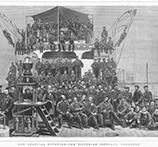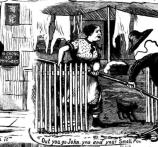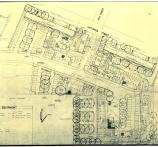Last updated:
Refereed articles

managing the Victorian fishery, 1885–1894
Expand SummaryThe ‘Outward Letter Book, Inspector of Fisheries and Game’ used between 1885 and 1894 is an unusual archival item at Public Record Office Victoria. Apart from being a rare example of a letter book from the Victorian Government’s colonial-era Department of Fisheries, it was used by only two inspectors over almost 10 years. Rather than the expected matter-of-fact administrative tone, the letters, memos and reports preserved in the Letter Book carry a clear sense of the authors as they express their opinions over a range of matters to do with the fishery. Both inspectors came from maritime backgrounds, so there is strong sense of identification with the commercial fishers with whom they regularly worked. At the same time, there is a palpable resonance with current concerns about the marine environment, species extinction and destructive fishing practices—matters that concerned both commercial fishers and the inspectors. Finally, the Letter Book captures a period of significant change in commercial fishing in the colony, as the older, pre-industrial remnants of artisanal fishing, brought to the colony by commercial fishers during the gold rush, gave way to an imagined industrial fishery with dreams of a Bass Strait trawling industry.
Forum articles

a victim of smallpox or fear?
Expand SummarySarah Hanks, a newly married 21-year-old woman, died in Walhalla, Victoria, during the 1868–1869 smallpox outbreak. In 2019, a lonely gravesite discovered in the vicinity of Walhalla was claimed as Sarah’s resting place. Doubts about the likelihood of the grave belonging to Sarah inspired the research for this article. While the investigation confirmed such doubts, it was Sarah’s diagnosis and treatment, as well as scholarly debates around the impact of smallpox versus chickenpox and the blame assigned to the Chinese population for the spread of diseases such as smallpox, that proved most interesting. It appears that the effect of chickenpox on the colonial Australian population has been misrepresented. By looking at a wide range of sources, such as local recollections from the time, news articles, public records and the chief medical officer’s correspondence, a clearer picture emerges of the fear and notoriety that came with a smallpox diagnosis in colonial Victoria.

In turn of the twentieth-century Melbourne, a pioneering network of women at the Mission to Seafarers called the Ladies Harbour Lights Guild (LHLG) supported sailors who risked their lives at sea. The deeds of this remarkable group of women were almost forgotten until 2007, when a set of dusty old boxes were discovered stored under the mission's theatre in the 90-year-old state heritage-listed building at 717 Flinders Street. The boxes held an archive filled with documents and photographs related to the activities of the LHLG from its foundation in 1906 to its demise in the 1960s. In recent years, a dedicated team of volunteers and staff at the mission has been gradually digitising, identifying and cataloguing the guild records. In 2018 and 2019 I had the opportunity to observe the work of the archive team while producing a short documentary about the LHLG. This article answers the question: what happens next after an archive of rare significance is discovered? Here I document some observations of the mission, its ongoing work, and the remarkable building and its connection to a hundred-year-old story of shipping, sea work and a community of volunteer women, as revealed through the slow and fascinating work of exploring an archive.

the Housing Commission of Victoria’s plans for inner Melbourne
Expand SummaryIn the 1960s and 1970s, the Housing Commission of Victoria (HCV) embarked on building large apartment towers for people on relatively modest means. This came at the culmination of more than 30 years pursuing an ambitious housing program to remove substandard housing across the city. While the apartment towers, such as those built in Flemington at Debney Meadows Estate, were a major change in Melbourne’s built form, the HCV was successful constructing these across many suburbs in the inner city in order to house thousands of people. It was when the HCV became involved in proposals for large-scale urban renewal, as was the case in the Carlton Comprehensive Redevelopment Area, that it met very stiff community opposition. This article explores these two examples, the Debney Meadows site and the Carlton redevelopment zone, through the abundant HCV archive, to show both the care and attention that the HCV brought to planning housing, but also its overreach in proposing to demolish half of a heritage suburb that was already undergoing spontaneous grassroots renewal.
![Detail of an image of the Melbourne Central Institute, c. 1920. PROV, VPRS 8357/P0001/63, Photograph [108], Postcard of the Victorian Missions to Seamen, Melbourne Victoria, undated. Detail of an image of the Melbourne Central Institute, c. 1920. PROV, VPRS 8357/P0001/63, Photograph [108], Postcard of the Victorian Missions to Seamen, Melbourne Victoria, undated.](/sites/default/files/files/banners/provenance_2022_banner_v2.jpg)